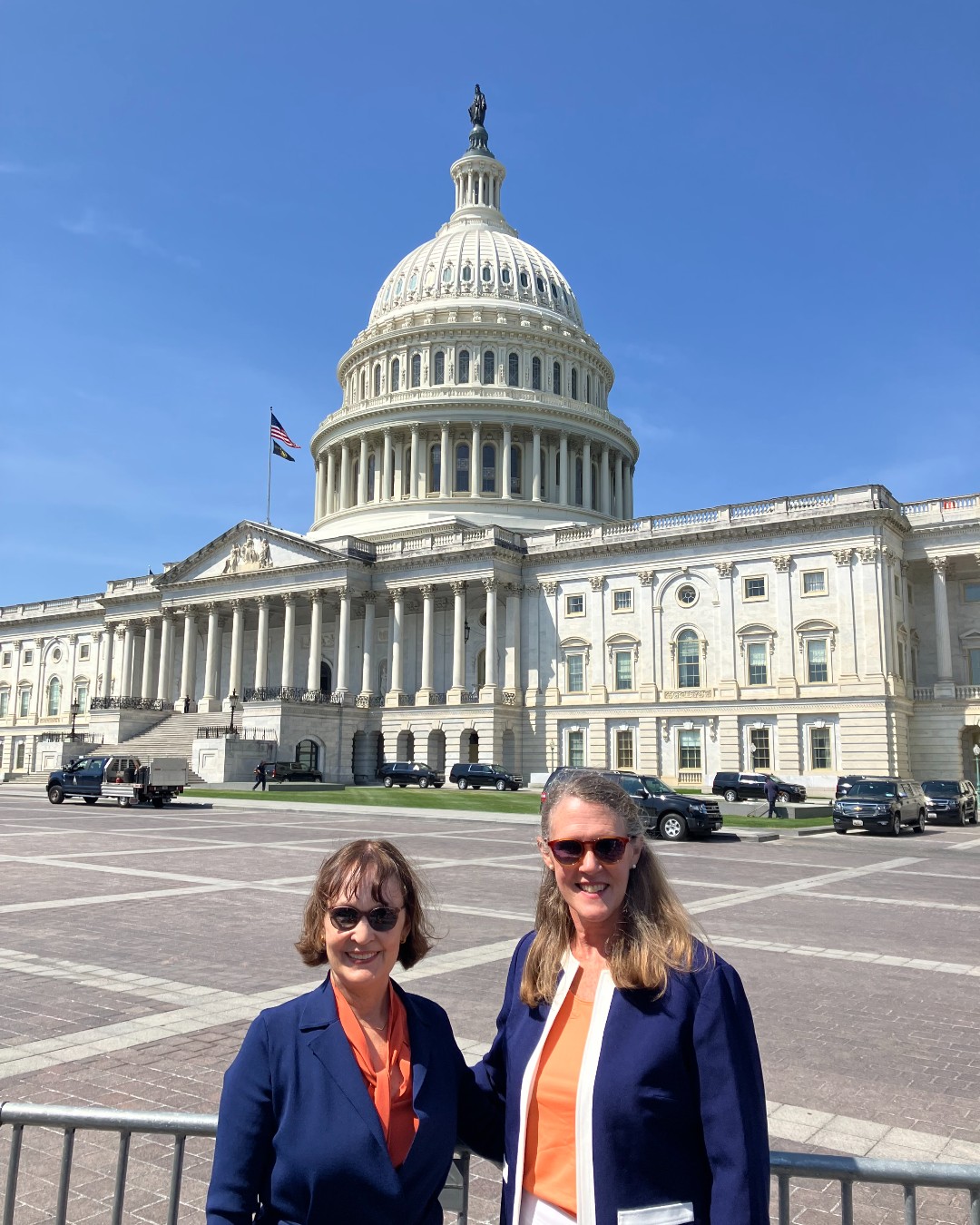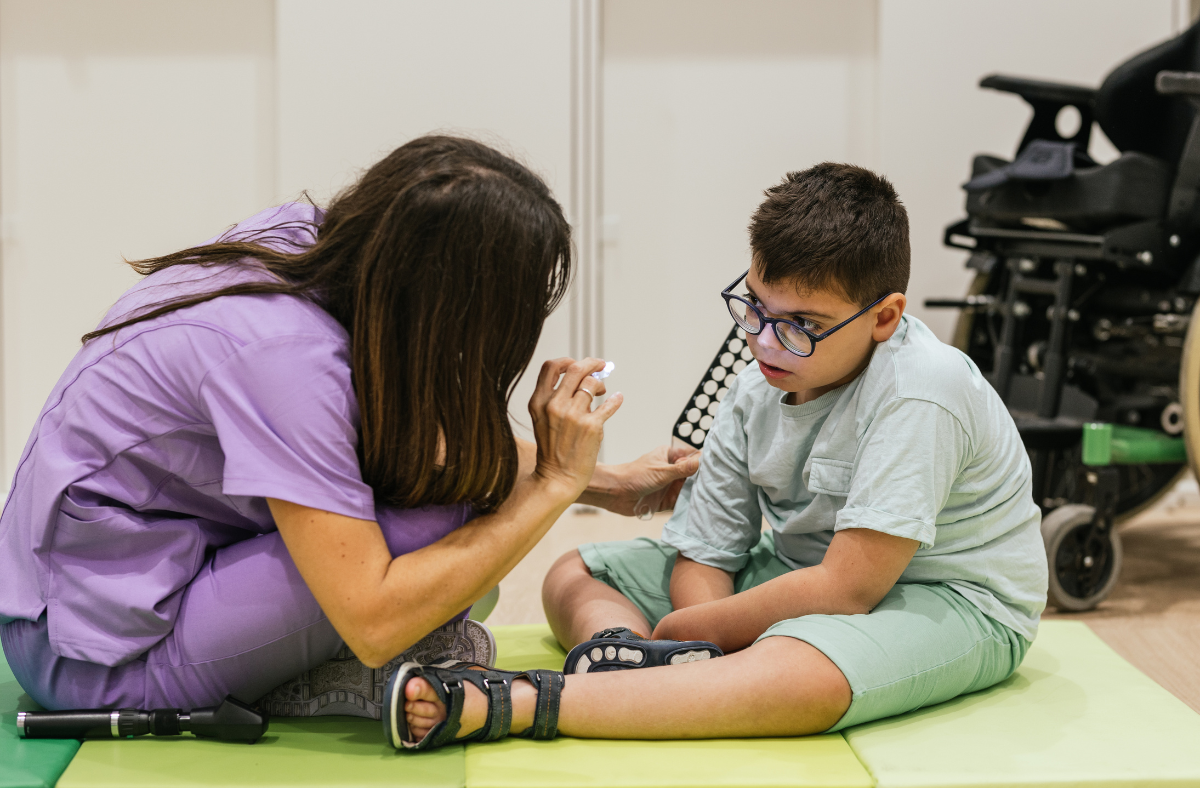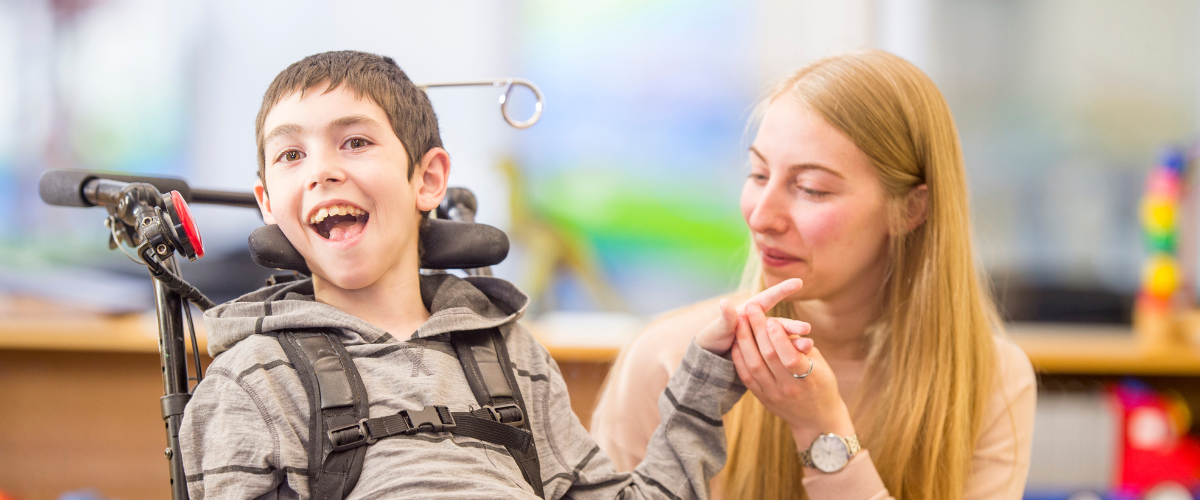This post recognizes May as Mental Health Awareness Month and Older Americans Month—celebrating two demographics that benefit from Medicaid.

We also recognize an important recent event: In the last week of April/first week of May, 120+ people representing 30+ Easterseals affiliates visited Washington DC, where they shared Medicaid stories with their Congresspeople and Senators. Cristen Reat, BridgingApps’ Program Director, was there. Her summary: “It was an uplifting and hopeful experience, meeting with other Easterseals staff from across the country, learning to be a partner with decision-makers, sharing our subject-matter expertise.”
Medicaid: The Big Picture
Ask the average non-Medicaid recipient what Medicaid offers, and a typical response is, “health care for people who couldn’t afford it otherwise.” That’s part of Medicaid, but only a small part! For many recipients, including people with disabilities, Medicaid also helps with:
- Daily-care activities such as eating, bathing, and getting dressed
- School services
- Job hunting
- Community integration
- And other supports people need to thrive
More specifically: Federal law requires every state to provide certain Medicaid benefits for health- and disability-related services. These include treatment from physicians and/or in hospital/nursing facilities. However, benefits also fund:
- Medication-assisted addiction treatment
- Health screenings for patients under 18
- Health services in patients’ homes
- Services from rural health clinics (in many areas, Medicaid funds make the difference on whether municipalities can afford a local clinic at all)
- Transportation to medical appointments
- Family planning
- Birthing services
In many states, Medicaid also funds:
- Physical and/or occupational therapy
- Salaries for personal-care assistants
- Eyeglass prescriptions
- Dental services
- Speech therapy
- Mental health care
- Hospice care
- Illness- or disability-specific treatments and clinics
- Preventive care for all ages
To find what your home state covers, search the state government’s website under “Medicaid.” Or ask your Easterseals office/social worker/doctor for help.
(For Texas residents: see “Medicaid and CHIP” on the Texas Department of Health and Human Services website.)

Other “Medicaid 101” Facts
- Medicaid is a “joint” program, meaning it receives funds from both federal and state governments. This is why specific benefits vary depending on a state’s budget and priorities.
- Your family may be eligible if household income falls below a certain level, and if the household includes: disabled family members; dependent children; pregnant women; and/or people over 65.
- People over 65 (or with certain disabilities) are eligible to receive Medicaid along with Medicare.
- Services covered by the federal Centers for Medicare & Medicaid Services include CHIP (Children’s Health Insurance Program). If your household income is too high for Medicare, you may still qualify for CHIP assistance with your children’s health care.
- For households with fluctuating income, some states offer a Basic Health Program (BHP) for ongoing coverage.
- Not every medical practice accepts Medicaid (often because benefits don’t equal the actual money spent on treatment). To be safe, find out early where you can use your Medicaid. Don’t wait for an emergency to occur.
- Beware of scammers using Medicaid’s good name! No legitimate Medicaid representative will ever phone or text to ask for your PIN, Lone Star number, or other personal Medicaid-related information.
- For more information, see the U.S. government’s “Medicaid” site.
Additional Resource for Texas Residents
Your Texas Benefits allows Texans to manage Medicaid (and other government-benefits) accounts in one place. It’s useful for viewing and updating personal information; uploading important documents; and receiving “time to renew” alerts.
- Your Texas Benefits app
- Your Texas Benefits website
- Your Texas Benefits phone number: 737-867-7700

